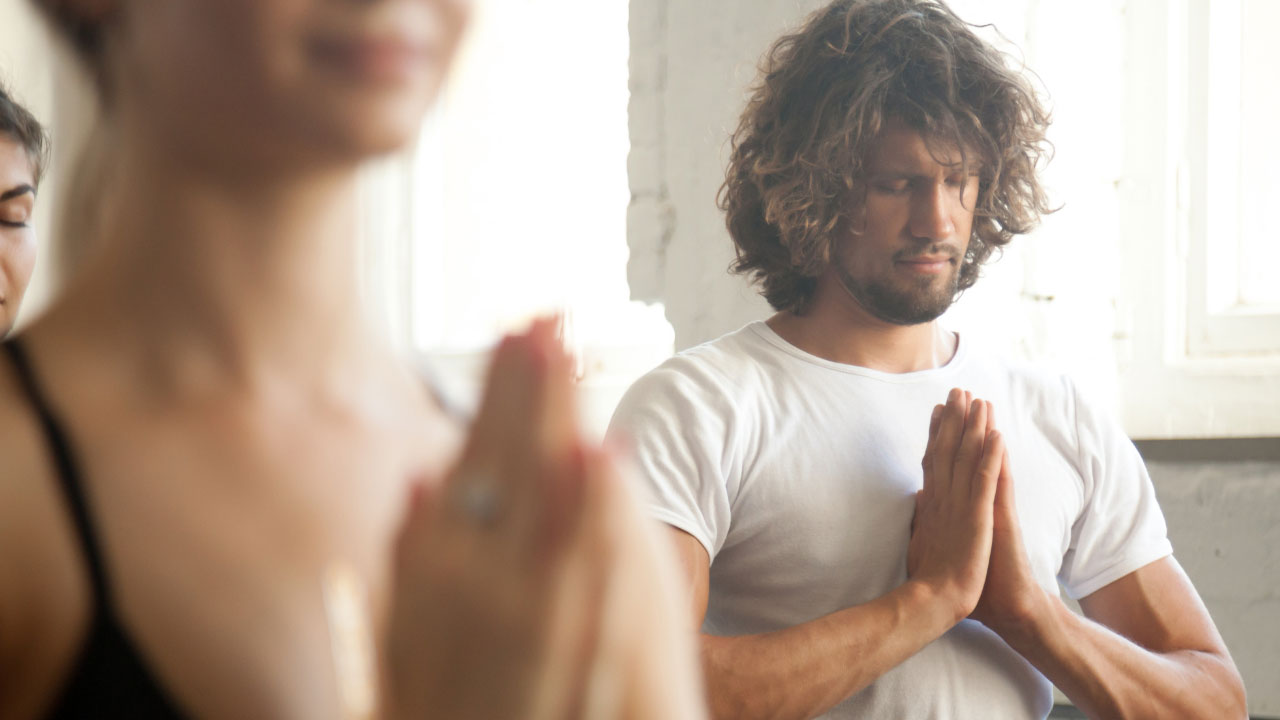Top tips for Tantra practice: an understanding of this subtle practice of self-love, brought to you by Gillian Osborne, Vice Chair of the British Wheel of Yoga
Citation by :https://www.ommagazine.com/

A‘Tantra’, which translated means to weave or to compose, is a type of text in dialogue style. Tantric texts outline rituals that require the instruction of a teacher. They have the reputation of being largely transgressive and shockingly risqué, but modern Tantric practices, in fact, bear little resemblance to early records.
Admittedly, there is historical evidence of left-handed goddess worship, yogini cults and ritualistic sexual acts, but transgressive practice was marginal. The Spanda Kārikās, commentary on the Śiva Sūtras is considered to be the seminal text on Tantra and an exposition on the interacting and complementary consciousness and power of the divine principles of Śakti and Śiva.
However, the subsequent interplay that becomes evident in later works between Viṣṇu, representing legitimate exercise of power, and Śiva, wielding a less predictable and sometimes destructive authority, demonstrates an evolving desire to seek balance and establish a middle ground. In short, Tantra has its roots in Indic tradition but the idea of a wild and uncontrolled ‘spirituality of sex’ is a contemporary and re-contextualised notion. (For the interested student this introduction is recommended: Samuel, G., (2010) The Origins of Yoga and Tantra. 2nd edition. Cambridge: Cambridge University Press).
The practice of yoga is one of a progressive state of awakening to the core of our being. When we are fully alive and in touch with our own centre, we are in a position to share of ourselves with another. No matter how accomplished the teacher, a joining and weaving of energy cannot meaningfully take place unless we are established within our own self, and able to harness our own power.
Top Tips for Tantra Practice:
SANCTUARY
Ambience is key in providing the optimum conditions to begin the journey towards yourself. An environment in which you feel relaxed enough to be in the moment, quiet enough not to be distracted and comfortable enough to let go will help your practice enormously. Use candles, incense or oils, music, sound and inspirational reading. For meditation, don’t force padmāsana (lotus) and sit instead in a comfortable supported position that will keep your spine aligned without the need for constant adjustment. For relaxation, commit to becoming a comfort junkie and use restorative props such as bolsters and blankets. With the best will in the world, few people will experience harmony in an uncomfortable, noisy, draughty and unwelcoming environment.
SENSATION
There are numerous styles of yoga practice and the journey to the self can accordingly take any number of routes. The important part of that journey is not the route it takes but the experience along the way. All practices can be mindful, and this need not be complicated; simple awareness will invite integration. Whatever the form of one’s practice the inward focus and the fully experienced reality of each moment will lead to a greater engagement with the whole. The living of each sensation in a posture, breath, moment; all cultivate a harmonious integration that expands into a fuller energetic reality.
SENSUALITY
The senses deliver to us that information to which we are receptive. What is sensuality if not being full of the senses. Pratyāhāra is not so much a rejection of the sensory world but an introspective yet detached appreciation of profound sensory input. Pleasure is a relative concept and sensual pleasure will be experienced in relation to where we are in our journey. The mindful focus on sensation in practice will lead to an inward appreciation of our full sensory repertoire and the development of our ability to control it, rather than vice versa. Therein lies true mastery.
SEX
Unless we experience ownership of who we are, how can we give of ourselves in a partnership? Tantra does not require the ability to be a sexual gymnast. It is not really about sex, it is about intimacy. Tantric practice with a partner is a way of joining energies synergistically. The two combined become more than the two individually. Synergy grows from intimacy and intimacy is based on trust, feeling comfortable enough to reveal who you are, and at the same time being willing to accept who your partner is, and to meet together in that space. This is a satisfaction beyond the mechanics of physical pleasure.
SELF
Tantra leads to an integration and expansion of energy and power that begins with you. It starts when you first pay attention to who you are, to your breath, your body and your senses. It unfolds as understanding of yourself grows. As you become connected with yourself and are able to express self-love, so your connection with another becomes more profound. Tantra is a doorway to experiencing a greater union with the cosmos, not just with a partner; and the person with the key to open it, is you.
BWY is at the heart of yoga, and the annual Sangha (community gathering) is for the love of yoga. Start the journey to meet yourself immersed in celebration of you; with a partner, a friend, or the fullness of your own self, guided by BWY’s accomplished teachers across the whole spectrum of practice. bwysangha.com